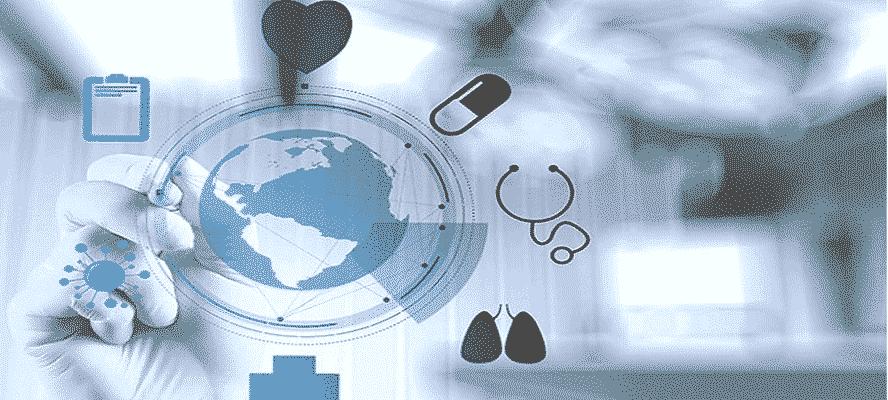Contribution of scientists belonging to various branches of science cumulatively unleashed a new era of molecular studies and like a relay race, the baton of discoveries passed on. From the genetic principles given by Gregor Mendel in 1865 to observation of chromosomes by Walter Flemming in 1879. The discovery of DNA structure by Watson and Crick in 1953, to sequencing by Sanger in 1975, followed by invention of PCR technique by Kary Mullis in 1985. All these together, changed the outlook of many fields particularly, diagnostics by boosting speed and specificity.
Polymerase Chain Reaction (PCR)
PCR is a rapid amplification technique used for generating multiple copies of specific DNA or RNA sequences.
It operates in a three step cyclic process
- Initial denaturation of the double stranded DNA into two single strands.
- Addition of primers that anneal to the specific sites of the target DNA.
- Extension of the annealed sequence by addition of nucleotides, in presence of thermostable DNA polymerase (Taqor Pfu polymerase).
Approximately 30 repeated cycles of these steps generate amplicons (amplified DNA copies) in a few hours.
Types of PCR
PCR can be classified into many types such as Conventional, Real time, Quantitative (qPCR), Nested, Reverse
transcriptase (RT PCR) and Multiplex.
Real Time PCR
Real time PCR enables precise quantification of nucleic acids of individual species and hence can be beneficial
for the diagnosis of genetic diseases and load of pathogen in a specimen. It comprises of a PCR analyzer with
an additional fluorescent detector (optical system) which measures the fluorescence of each sample during
amplification that represents the amount of product that is amplified. Nested and Hemi-Nested PCR Nested PCR
is a two step process wherein the first pair of primers are used for amplification of a fragment, while the second
pair of primers are used to amplify a smaller fragment from the product of first PCR. In hemi-nested PCR,
one of the first primers is incorporated (nested) with an additional internal primer used in second PCR,
hence the specificity is further increased.
Reverse Transcriptase
RT PCR A modification of PCR called reverse transcriptase PCR (RT-PCR) is used for detection of RNA target,
such as rRNA or a segment from the genome of an RNA viruses. In this type of PCR, an RNA template acts as
the initial target, and reverse transcriptase creates a complementary DNA copy of this RNA which can be
amplified in the same manner as the conventional PCR.
Multiplex PCR
In Multiplex PCR, more than one pair of primers can be incorporated for amplification of many sequence
simultaneously in a reaction mixture. Identification of multiple viruses, bacteria, fungi and parasites at a
time is also facilitated by this type of PCR.
Application of PCR in Diagnostics
The different types of PCRs and the spectrum of advantages offered by them like specificity, reproducibility,
reduced risk of sample contamination, rapid and quantitative detection has revolutionized molecular
diagnostics. Following are few of the diagnostic applications of PCR
Tuberculosis (TB) and Extrapulmonary Tuberculosis (EPTB)
PCR based microbial DNA detection is highly sensitive and rapid compared to the conventional methods like
microscopy and culturing. PCR assays use common insertion elements like 156110, which are carried in
multiple copies by most of the MTB strains. Isolation and identification of DNA from histological material
like formalin-fixed tissues and dried scraped material are also possible via PCR. Hence, this proves beneficial
in rapid and sensitive detection of MTB in case of culture negative samples or when fresh specimen samples
are unavailable as in TB endemic and non-endemic regions. PCR is an important tool in diagnosis of EPTB
owing to the paucibacillary load in extrapulmonary specimens. In such cases, real time or nested PCR are
more effective than the conventional assay.
Virology
Advent of PCR specifically Real Time PCR, enabled viral nucleic acid detection and characterization, by
amplifying specific regions of interest. Few of the advantages of PCR are enlisted below
- PCR testing of amniotic fluid helps in detection of intrauterine infections like cytomegalovirus (CMV), rubella, and varicella zoster virus in fetus.
- The invasive method of brain biopsy in HSV encephalitis has been overcomed with availability of PCR
Other Applications
Other applications of PCR include detection of various inborn genetic defects, rapid prenatal diagnosis
for inherited disorders and sorting parental disputes. It has an essential role in forensic investigations
where the DNA load is poor.
Gene Sequencing
It is a decoding process used to understand the arrangement of nucleotides. Recent advancements
have enabled identification of numerical or structural abnormalities, even point mutations. Evaluation
of rare disorders and different cancer causing mutations for screening prenatal aneuploidy or assessment
of treatment development has become feasible with gene sequencing.
Cancer Diagnosis
Next Generation Sequencing (NGS) has transformed the cancer diagnostics. Identification of critical
cancer-gene alterations in solid tumor can be effective in diagnosis and management; while it can
also be helpful in targeting therapies. Also the characterization of hematological malignancies are
evolving continuously which includes identification of additional common mutations that can help
in further diagnosis.
Solid Cancer Diagnosis
Thyroid Cancer
Thyroid nodules are mostly benign, but identification of the nodules that can be progenitor for cancer
is essential, hence, timely detection becomes very crucial. ThyroSeg, a costomised gene panel was
developed in 2013 that aided the improvization of NGS. This gene panel enables targeting of 284
mutational hotspots in 12 cancer genes.
Hereditary Breast Cancer (HBC)
BRCA1 and BRCA2 genes code for the tumor-suppressor proteins which are important for DNA repair
and hence mutation in these genes accelerates the life-long risk of developing Hereditary Breast Cancer. Mutations
inherited by women in the BRCA1 (17q21) or BRCA2 (13q12.3) pose on them an enhanced risk of
breast and ovarian cancers. NGS detects point mutation in the BRCA1 and BRCA2 genes in a rapid,
sensitive and cost effective manner. Also the alterations in RAD50, TP53, ATM, BRIP1, FANCI, MSH2,
MUTYH, and RAD51C are linked with HBC.
Lung Cancer
Research studies propose the use of tyrosine-kinase inhibitors (TKIs) as biomarkers for the detection
of Lung cancer. The first demonstration of lon AmpliSeq Colon and Lung Cancer Panel on lung adenocarcinoma
samples was given in 2013, which comprise several mutational hotspots in 22 cancer related genes.
Hematologic Cancer Diagnosis
Multiple Myeloma
It is the malignancy of plasma cells and usually undergoes transformation in multiple steps. This transformation
is associated with hyperdiploidy and translocation. Mutations in genes KRAS, NRAS, and BRAF are suggested as
target for detection, by few studies.
Lymphoma
NGS have allowed investigation of different lymphoid tumors including Hodgkin’s lymphoma, diffuse large
Bcell lymphoma, Burkitt’s lymphoma, chronic lymphocytic leukemia and follicular lymphoma. Detection of
various mutations in BRAF, MYD88 NOTCH2 , NOTCH1 and SF3B1 are assessed for different purposes.
May the Baton of development be lightened… Alive For the health and advancement of humankind








